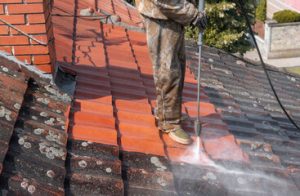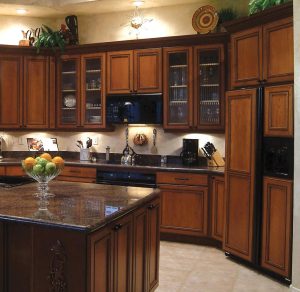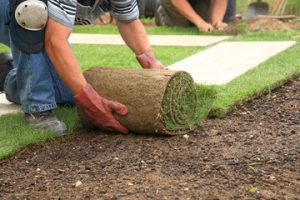A roof tells the silent story of a home’s endurance. Over time, that story gets clouded by dirt, moss, and wear. Roof cleaning revives more than surfaces; it restores structure, integrity, and beauty. What seems like a simple wash is, in truth, a calculated balance between care and precision.

Modern Roof Cleaning has transformed into a specialized science. Gone are the days when it meant blasting away grime with force. Today, professionals use controlled techniques that consider material, climate, and age. Each roof demands a unique approach that safeguards its structure while enhancing its appearance.
The unseen layers of a roof often carry more than dust. Microorganisms like moss and algae grow silently, feeding on moisture and organic particles. Over time, these small invaders cause stains, weaken surfaces, and shorten the roof’s life span. Cleaning becomes not just aesthetic but essential preservation.
The process begins with understanding the roof itself. Different materials respond differently to moisture and pressure. Some require gentle washing, while others can withstand more aggressive methods. The mastery lies in knowing how to treat each surface without compromising its integrity.
A professional cleaner assesses every slope, edge, and joint before beginning. This initial inspection prevents costly mistakes and reveals potential issues. Small cracks, loose tiles, or blocked gutters often come to light during preparation. Roof cleaning, therefore, doubles as an early detection system for structural health.
Beyond visual appeal, the process improves performance. A clean roof reflects more sunlight, reducing internal heat and energy strain. It also prevents pooling, leaks, and water absorption that can lead to mold and decay. Each rinse contributes to long-term protection and efficiency.
Technological advancements have revolutionized the craft. Specialized low-pressure systems and eco-safe solutions now dominate the field. These innovations clean deeply while minimizing runoff or surface damage. Precision tools ensure that cleaning enhances longevity rather than compromising it.
Safety is a cornerstone of every roof cleaning operation. Professionals handle steep angles, fragile materials, and weather conditions that test both balance and skill. Harnesses, anchors, and specialized ladders become extensions of the cleaner’s precision. Behind the shine lies a discipline grounded in safety and respect for height.
Moss removal is one of the most intricate aspects of roof care. It requires delicacy, patience, and timing. Removing it too harshly can strip the roof of its protective layer. Leaving it unchecked can cause structural degradation. The balance comes through controlled, methodical removal techniques that cleanse without harm.
Regular maintenance proves far more efficient than reactive repair. Roof cleaning performed periodically prevents buildup that could demand major restoration. It’s a proactive measure that saves both resources and structural integrity over time. Prevention, in this sense, becomes the most powerful form of care.
Environmental responsibility now defines the modern cleaning approach. Harsh chemicals once used to strip away stains are being replaced with biodegradable alternatives. Water-saving methods and controlled waste management ensure minimal ecological impact. Cleaning today is as much about stewardship as it is about shine.
In urban settings, roofs collect pollutants, soot, and organic waste. These layers not only dull the surface but can corrode materials over time. Professional cleaning reverses this damage, reviving texture and extending resilience. It restores roofs from dull neglect to durable strength.
Even in rural or natural environments, challenges persist. Falling leaves, bird droppings, and shifting weather patterns can accelerate decay. Consistent cleaning maintains equilibrium, ensuring that natural beauty doesn’t turn into structural risk. It bridges the harmony between the environment and architecture.
Technology continues to elevate precision in the field. Drone inspections and sensor-based mapping help professionals identify problem areas before cleaning begins. These tools allow for targeted treatment, reducing waste and time. Innovation ensures every sweep of the process is smarter and more efficient.
The psychological impact of a clean roof often goes unnoticed. For homeowners, it brings peace of mind and renewed pride. A well-maintained exterior reflects care, stability, and attention to detail. The sparkle above becomes a quiet symbol of well-being below.
On a commercial scale, roof cleaning contributes to brand integrity and operational safety. It prevents leaks that could damage assets and ensures compliance with building regulations. Clean, well-maintained structures also attract clients and occupants. They project reliability and professionalism in every visible detail.
Seasonal factors influence cleaning strategies significantly. Professionals tailor their methods to rainfall patterns, sunlight intensity, and humidity levels. Each environment demands a different rhythm of care. This adaptability defines true craftsmanship in roof maintenance.
Roofs made from metal, tile, or composite materials each have their vulnerabilities. Metal may oxidize, tiles may crack, and composites may absorb grime unevenly. Professionals know these tendencies and respond with the right treatment every time. Their expertise turns complexity into consistency.
In areas with heavy vegetation, roofs become natural collectors of organic debris. Branches, pollen, and fallen leaves accumulate and trap moisture. Left unattended, they create fertile ground for growths that erode roofing surfaces. Proper cleaning interrupts this cycle and restores the roof’s defensive balance.
The rhythm of cleaning follows both necessity and patience. Each section is treated progressively, ensuring even results and avoiding overexposure. The process might seem repetitive but demands immense focus. It’s an art form performed with water, air, and control.
Weather forecasting plays an essential role before cleaning begins. Ideal conditions ensure solutions adhere properly and drying occurs evenly. Sudden rain or high winds can compromise results or endanger safety. Timing, therefore, is as vital as technique.
Gutter cleaning often accompanies roof washing, creating a comprehensive maintenance routine. Clogged gutters lead to overflow and damage that spreads downward. By combining both services, professionals achieve full-system functionality. Clean roofs and clear channels ensure efficient drainage and preservation.
For historical or vintage buildings, roof cleaning takes on even greater care. Older materials require gentler methods to prevent irreversible damage. Skilled professionals restore aged surfaces while maintaining authenticity. This balance preserves heritage and extends the structure’s life for future generations.
Roof cleaning also supports sustainability beyond the structure itself. By preventing premature replacements, it reduces material waste and resource use. A well-maintained roof contributes to energy efficiency and environmental preservation. Clean surfaces become quiet agents of eco-conscious living.
Noise control is another often-overlooked consideration. Modern cleaning systems operate quietly to minimize disruption in residential or commercial zones. This attention to comfort aligns with the profession’s growing refinement. Cleaning, at its best, harmonizes with daily life.
The future of roof cleaning points toward automation and data-driven care. Smart sensors could soon monitor roof conditions and signal when cleaning is needed. This predictive maintenance would save resources and prevent damage before it begins. The integration of AI ensures the next generation of cleaning will be proactive, not reactive.
Despite innovations, the essence of roof cleaning remains human. It requires hands that understand balance, eyes that detect subtle flaws, and instincts that guide gentle precision. Machines may assist, but the craft depends on human understanding of materials and environment. Each stroke becomes an act of mindful preservation.
Rain, wind, and sunlight are the roof’s eternal adversaries. Regular cleaning doesn’t fight nature but works with it, maintaining harmony between exposure and endurance. Through constant care, roofs withstand elements gracefully. They become lasting shields rather than fragile covers.
In neglected states, roofs can hide silent dangers. Water seepage, mold spores, and structural weakening go unnoticed until visible damage appears. Routine cleaning exposes these risks early, transforming invisible threats into manageable solutions. The process protects both property and peace of mind.
Professionals understand that roof cleaning is more than surface renewal. It’s a dialogue between architecture and time. Each cleaning session resets the balance, extending durability and enhancing value. The roof regains its dignity, standing tall as both protector and symbol of care.
In every droplet that slides down a newly cleaned roof lies reflection. It mirrors not just the sky but the effort, expertise, and dedication behind the craft. Roof cleaning may appear simple, yet it carries depth and discipline. Through its precision, homes breathe easier, and structures stand prouder.
The act of cleaning is, in essence, renewal. Roof cleaning embodies that philosophy, merging skill, science, and respect for what shelters us. It’s a quiet service that sustains strength, beauty, and resilience from above. In every gleaming roofline, we glimpse the artistry of preservation and the poetry of care.






